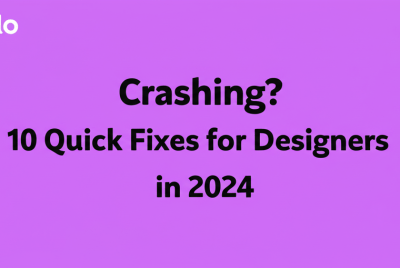The term creative industry or economy covers artistic disciplines producing products of economic value. The professionals behind these disciplines increase the value of their products when trained over time; UI/UX for instance increases in value e.g pleasing interfaces for businesses the more projects designers take on , same as other genres like Graphic design, Illustration, Animation et.c
Key sectors within the creative industry also called the creative economy include:
- Advertising and Marketing: Creating and promoting products and services through various media channels.
- Architecture: Designing and constructing buildings and structures.
- Crafts: Producing handmade and unique items.
- Design: Graphic design, industrial design, fashion design, etc.
- Film, TV, and Radio: Producing and distributing audiovisual content.
- Music: Composing, producing, and performing music.
- Publishing: Writing, editing, and publishing books, magazines, and other written content.
- Software and Video Games: Developing creative and interactive digital products.
- Fashion: Designing, manufacturing, and selling clothing and accessories.
- Performing Arts: Theater, dance, and other live performances.
The notion of what creativity is has evolved to a broader one; it is now recognized as a human feature not limited to artistic endeavors but characterized by forward thinking. Notable names like Steve Jobs are creatives who did not major in an artistic discipline.
But when we speak of creativity as an industry then this refers to artistic abilities offered as services.
How Technology Defines the Creative Industry
Technology defines the creative industry by creating new channels of interactions which creative disciplines adapt to e.g. writing now including technical features like Search Engine Optimization to ensure the visibility of written content on the web. As technology develops creative disciplines too evolve to meet the demands of these new avenues.
Technology improvements also create new forms of artistic disciplines like photography which owed its rise to the invention of the camera.
Digitization offer a boost in the creative industry in the following ways.
- Digital Production Tools: Digital technologies have revolutionized the tools and software available for content creation. Graphic design, music production, video editing, and other creative processes have become more accessible and efficient, allowing artists to bring their ideas to life with greater ease.
- Distribution and Accessibility: Digital platforms and online distribution channels have democratized access to the creative industry. Artists can now reach global audiences without the need for traditional gatekeepers such as publishers or record labels. Digital distribution has also reduced costs and barriers to entry for many creatives.
- E-commerce and Online Sales: The rise of e-commerce has enabled artists to sell their work directly to consumers through online platforms. This has expanded opportunities for independent artists and creators to monetize their content, whether it be digital downloads, art prints, or other merchandise.
- Global Collaboration: Digitization has facilitated collaboration among artists, musicians, and creators from different parts of the world. Online platforms and tools enable seamless communication and file sharing, making it easier for creative professionals to collaborate on projects regardless of geographical distance.
- Data and Analytics: Digital platforms provide valuable data and analytics that help creators understand their audience, tailor their content, and make informed decisions about their work. This data-driven approach can enhance marketing strategies and improve the overall quality of creative output.
As of 2022, the global Creative Industries market was estimated at USD 2669224.0 million, and it’s anticipated to reach USD 3434322.0 million in 2028.
How Can Creatives Benefit From The Creative Boom?
Utilization of the creative boom requires a refining of creative skills to meet the emerging needs of businesses across new and existing platforms and educating fellow creatives through specialized knowledge.
1. Developing Their Skill Sets :
Refining skills to attract attention helps creatives increase their value-adding potential to a business and therefore their worth. In 2024 creatives with the ability to directly impact sales and demonstrate this impact through measurable data would no doubt be in high demand and command high figures. Graphic designers for instance can focus on creating designs with more captivating detail to attract attention and sales. They could also ask for previous results and compare them to their present efforts for a sense of impact, record these improvement and always share to individuals seeking to hire graphic designers.
Here are 5 sure ways to improve your skill set and worth in the creative economy
- Networking: Build a strong professional network within your creative community. Attend industry events, conferences, and meetups to connect with other creatives and potential collaborators. Engage with online communities and forums to share knowledge and insights.
- Portfolio Development: Regularly update and enhance your portfolio with your latest and best work. Showcase a diverse range of projects to demonstrate your versatility and expertise. Use your portfolio as a tool to highlight your unique style and creative voice.
- Collaboration: Collaborate with other creatives on projects to gain new perspectives and experiences. Seek opportunities to work on diverse projects that challenge and expand your skill set. Participate in group exhibitions or joint ventures to increase your visibility.
- Mentorship: Seek mentorship from experienced professionals in your field. Learn from their experiences, receive feedback, and gain valuable insights. Mentorship can provide guidance on career development and navigating the industry.
- Online Presence: Establish a strong online presence through a personal website and social media. Use platforms like Behance, Dribbble, or Instagram to showcase your work. Actively engage with your audience and participate in relevant online communities.
- Freelancing and Side Projects: Take on freelancing projects or personal side projects to gain practical experience. These projects can serve as additional portfolio pieces and help you build a diverse body of work.
2. Educating Fellow Creatives:
Creatives can offer education to fellow creatives for a one-off price or subscription fee. The Edtech sector is worth $105 billion creatives can tap into the hunger for education and the high numbers of creatives for every niche by offering knowledge to help improve the skill sets of fellow creatives. Several platforms exist to make this possible and easier like Udemy, a widely used online learning platform where instructors can create and sell courses on a variety of topics, including creative skills like graphic design, photography, and music.
Here are ither platforms you can share your knowledge to add value to the creative economy
Skillshare: Skillshare is a platform that focuses on creative skills. Creators can earn money through the platform’s Partner Program, which pays instructors based on the premium member watch time of their classes.
Teachable: Teachable is a platform that enables creators to build and sell their online courses. It provides tools for creating and customizing courses, as well as handling payments.
Thinkific: Similar to Teachable, Thinkific allows creators to build and sell online courses. It offers features for course creation, marketing, and sales.
Podia: Podia is an all-in-one platform that allows creators to sell online courses, memberships, and digital downloads. It provides tools for building a website, hosting content, and managing payments.
YouTube: Creators can use YouTube to share educational content and monetize it through the YouTube Partner Program. This program allows eligible creators to earn money from ads, channel memberships, and Super Chat.
Patreon: While not a traditional course platform, Patreon allows creators to earn money by offering exclusive content, including tutorials and behind-the-scenes access, to their supporters. Creators can receive recurring payments from patrons.
The Purpose Of The Creative Economy:
The creative economy exists to support businesses achieve their goals by developing materials in pleasing ways for communication and marketing purposes.
Other purposes occur when creative industries themselves exist to serve consumers directly e.g. the music industry. Here the purpose is the production of creative products as a form of expression, for entertainment and also commercial intent.
It could be said that creativity is as old as humanity itself; From prehistoric times creativity has always displayed itself either as paintings on cave walls or in the fashioning of hunting implements from sharp objects but digitization has seen artistic abilities evolve to fit technological platforms like writers now going beyond literary rhymes to include search engine optimization, a more technical kind of writing.
The recent advancement in machine learning through AI has also redefined creativity in regards to who produces it. Thus a purpose of the creative economy is also the adaptation of skills to engage individuals through these new formats. The creative industry in Nigeria is a good example where players have emerged on platforms like Instagram to serve users with hilarious content.




